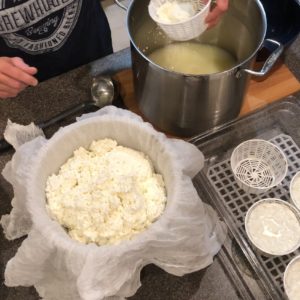Happy World Milk Day!
We wanted to celebrate World Mike Day by sharing a video and some pictures from when we were doing research on Mursik, a fermented ash yogurt in West Pokot, Kenya.
Scroll to the end to get our Top 4 Tips for Integrating Dairy in the healthiest and most sustainable ways possible.
World Milk Day is observed every year on June 1 to recognize the importance of milk as a global food. However, let’s not forget that despite its impressive nutritional profile milk should be fermented, so our bodies can make the most of this incredible food.
Just like other mammals, human infants are perfectly designed to safely and efficiently digest dairy. However, when solid food is introduced, mammals begin to loose their ability to produce the enzymes necessary to safely and effectively digest milk. Part of that digestive process is to coagulate the milk to slow it down the raw milk in our digestive tract and allow time for it to ferment and chemically and physically transform. Thankfully, we adult humans can replicate this process outside of our bodies by fermenting the dairy before we consume it into foods such as yogurt, cheese, butter and kefir.
Learning how to ferment dairy in West Pukot
Back in March 2018, we traveled to West Pokot, Kenya to learn the ancestral practice of making Mursik. Mursik is a traditional fermented ash yogurt that some tribes still make today. We were so fortunate to learn from an amazing tribe still practicing this nutrient-dense technique today.








Don’t worry! You don’t have to travel to West Pokot, Kenya to learn and taste the importance of fermented dairy. There are things you can do right now to get started in your home kitchen!
Tips to ensure you and your family are consuming dairy in the most nourishing, ethical and sustainable ways possible:
- Start with the highest quality milk you can. Ideally, this means A2, full-fat, non-homogenized, raw milk from healthy animals raised on natural diets. When this is not possible, do your best with what you have to work with.
- Get to know your local dairy farmer and support them directly whenever possible.
- Do not simply drink milk. Instead, consume dairy in its fermented forms such as traditional cheese, fermented/cultured butter, yogurt, kefir, and creme fraiche/crema.
- Take matters into your own hands! Learn to ferment dairy in your kitchen to increase the safety, nutritional value, bioavailability, flavor, aroma and texture!
Want to learn more?
Check out a few of our other blogs that dive deeper into the dairy debate and learn more about our trip to Kenya

Ready to try your fermenting dairy in your home kitchen?
Check out one of our on-demand classes and get started now or enroll in our virtual Fermented Dairy Master Class this September 2021!








 Judging A Food By Its Cover part 1
Judging A Food By Its Cover part 1
Leave a Reply